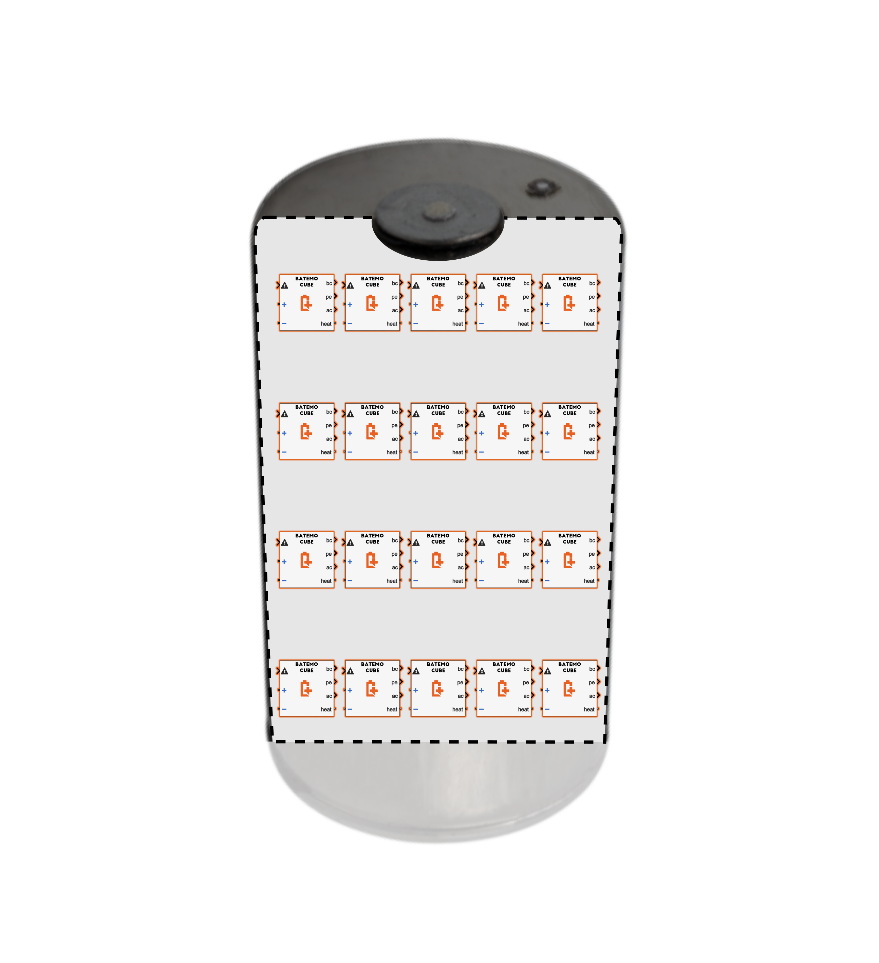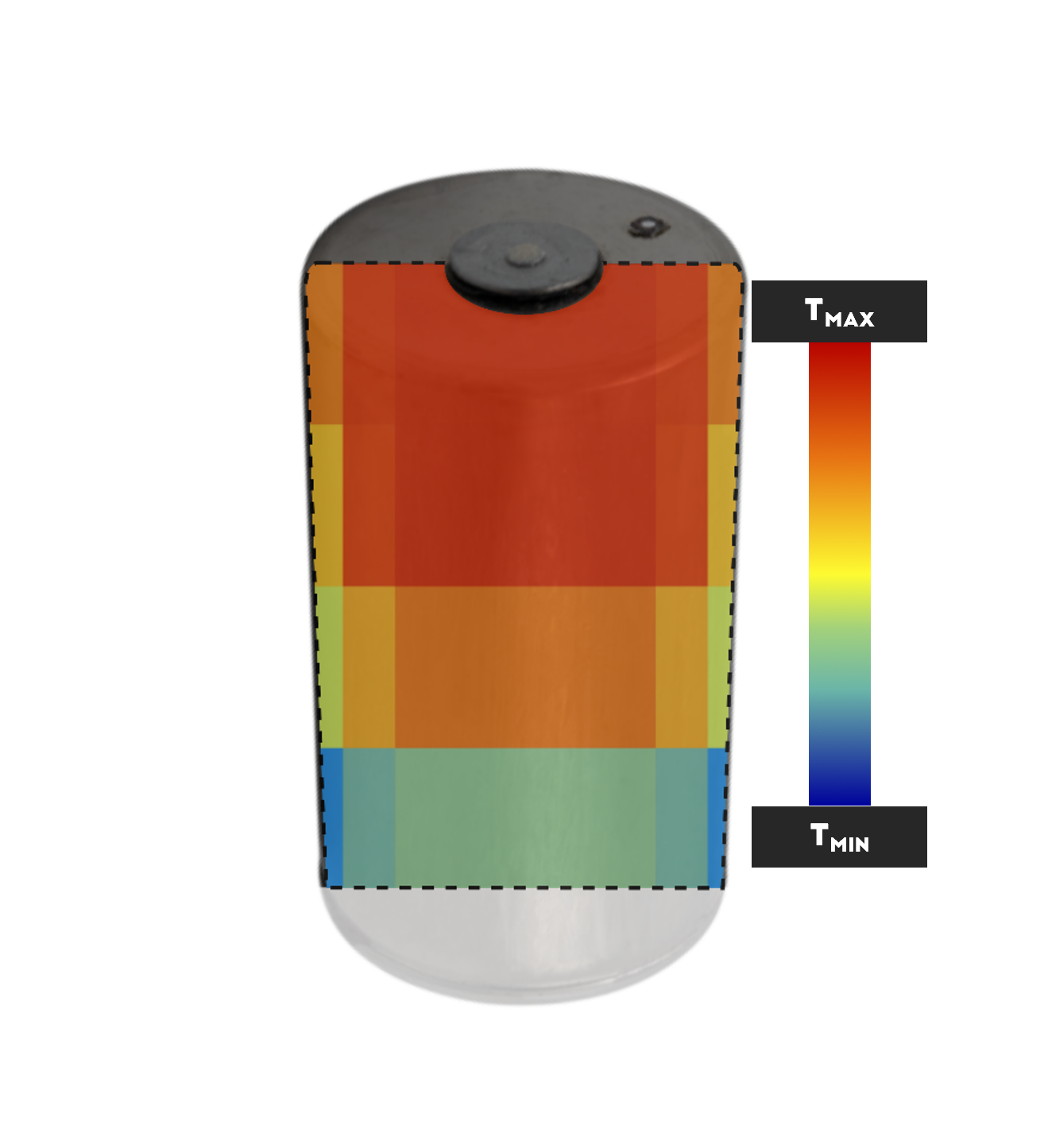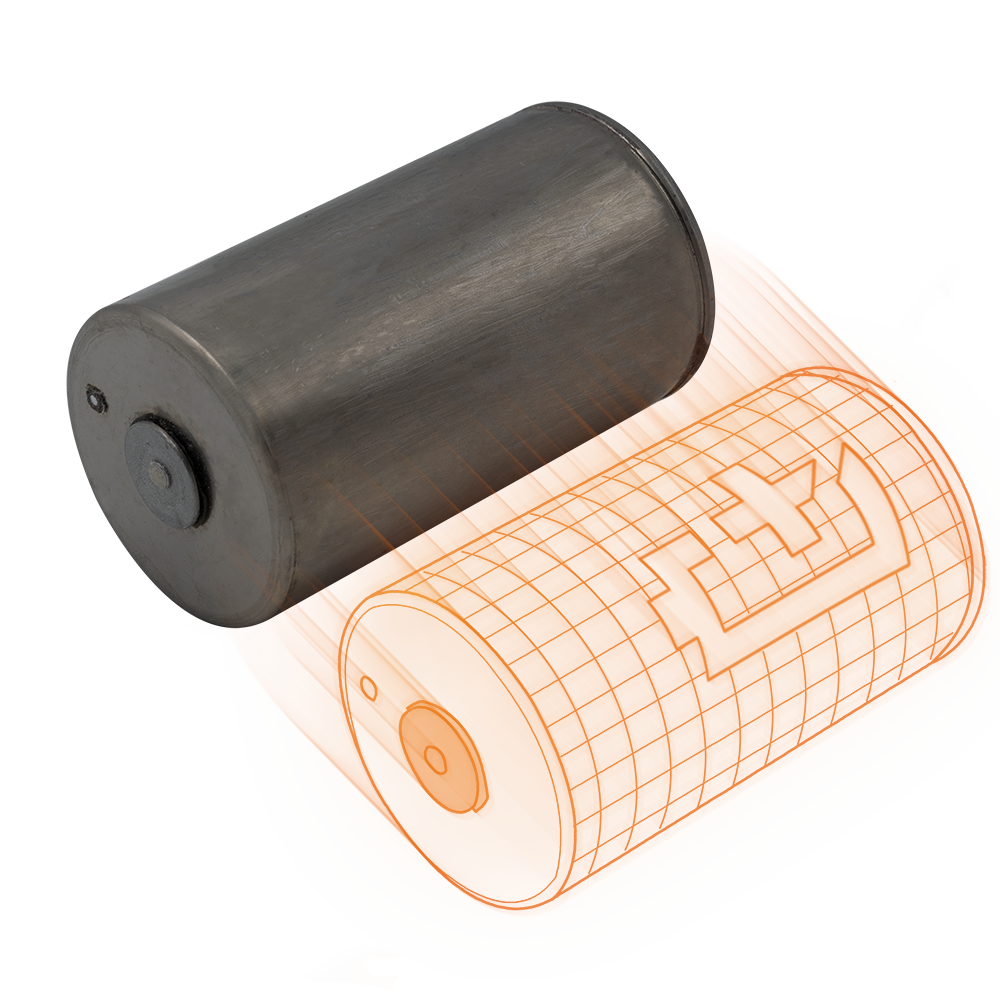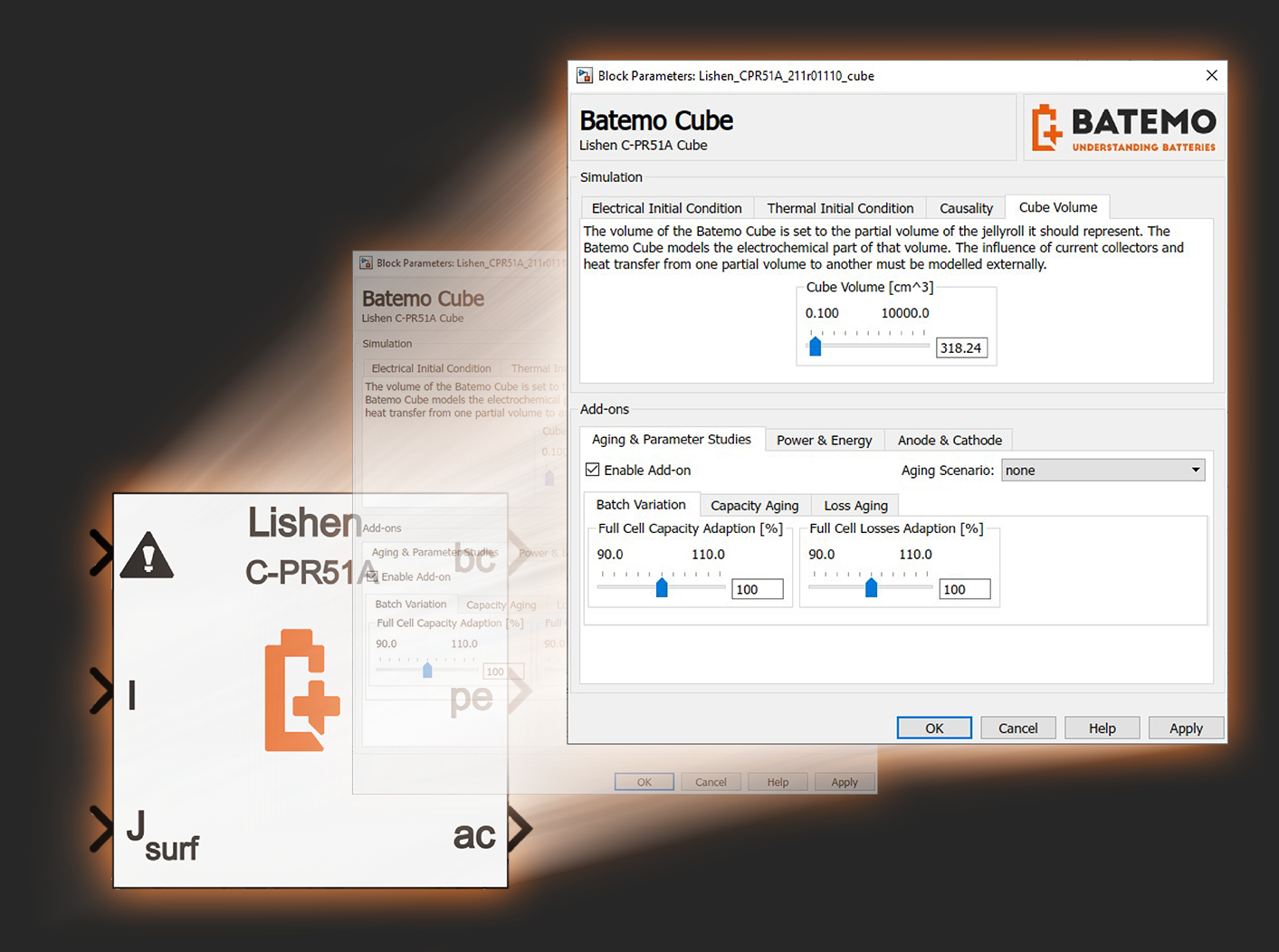Do you Want to Study
the 3d behavior of your battery cell?
Let’s have a look!
Description
The Batemo Cube Model is a versatile tool for simulating local distributions of internal quantities within a battery cell. Based on Batemo’s unique modeling technology, the batemo cell model, it allows for custom multi-dimensional discretization of the cell interior resulting in highly precise and spatially resolved results. This enables you to identify and predict local effects and to quantifying critical inhomogeneities within the cell.
Fast
Multi-dimensional simulations are computationally expensive and time consuming. Batemo Cube Models are optimized to run within seconds or minutes, depending on the discretization level.
Physical
A spatial resolution of internal quantity distributions requires to precisely describe all relevant electrical, chemical, thermal and physical processes inside the cell. Based on Batemo’s unique modeling technique, the Batemo Cube Model ensures physical correctness even under extreme conditions.
Accurate
The Batemo Cube Model is derived from the Batemo Cell Model, the most accurate battery cell model there is – guaranteed! We always demonstrate the validity through extensive measurements that prove highest accuracy.
Each Batemo Cube Model is an electrochemical model of the cells active volume representing a fraction of the jellyroll. The heat and current transfer between single Batemo Cube Models, the cell exterior and passive components (cell housing or poles) needs to be modeled externally. Therefore, setting up a model of a real cell using Batemo Cube Models requires some expertise. The great benefit of the extra effort: you gain information about local distributions of all internal cell quantities. This helps you to understand, Identify and predict local hot spots for aging and safety issues and develop design improvements or optimized cooling concepts for the cell. On top, you can trigger local shorts manually or adapt the external model to see how your active material would perform in a different housing type.
Real
battery Cell

3D Discretization
with Cube Models


Inner Temperature Distribution

Batemo Cube Models can be derived from any Batemo Cell Model. Just let us know which cell you are interested in, and we can create a custom Batemo Cube Model exclusively for you.
Batemo Cell Model
Library
Subscribe and get immediate access to many battery cell models. Regular updates with new hot cells are included. Look at the Batemo Cell Explorer to see what is available!

Custom
Batemo Cell Model
When you have your own cell and you want to keep everything confidential, we create the Batemo Cell Model exclusively for you.


Batemo cube model
Predicting the internal cell behavior with the Batemo Cube Model is easy. Just like the active volume of a battery cell, the Batemo Cube Model has an electrical and a thermal interface. The interface is designed to make integration straight-forward: Setting initial conditions is intuitive using the graphical parameter interface. Once a proper model of the other battery components is set up you supply the electrical and thermal boundary conditions and are ready to go.
This is how you simulate the dynamic performance of your battery cell under all conditions and predict local distributions of your internal cell quantities. Everything you can do with the real cell, you can now do with the Batemo Cube Model in your simulations. This is not only true for data you can measure in the laboratory. The Batemo Cube Model calculates additional, highly relevant internal cell quantities: inner temperatures, electrochemical electrode potentials or insights about loss generation.

integration
We integrate the Batemo Cube Models into your simulation environment. This makes building on your previous work and technical onboarding super easy. Built-in integration is available for MATLAB Simulink, MATLAB Simscape, AVL CRUISE M, AVL Fire M, Elements and Cradle CFD. Additionally, Batemo Cube Model FMUs allow integration into all common simulation tools.
To give you a smooth onboarding, we schedule regular calls with Batemo Support to get started. We supply a ready to use model that you can modify according to your needs, and you get permanent access to the Batemo video tutorials that introduce all features and show best-practice examples. To get you started, another option is to let Batemo Engineering do your modeling and simulation work in an initial project. We deliver all models, scripts and data so that you can take over from there.
Advantages
You use the Batemo Cube Models to make your battery development simulation-based, making it faster, lower cost while leading to better products. This is how we generate value and contribute to your success.
Better
Using Batemo Cube Models you extend the understanding of your cell by taking a look inside. You identify spatially resolved effects and derive optimal design solutions in the complex, nonlinear battery design space from it. You develop and improve your key features and differentiate from competitors.
Faster
With Batemo Cube Models resolving quantities inside your cell takes a fraction of the time compared to conventional multidimensional simulation methods. Identify critical local effects and improve internal and external cell features without lengthy measurements.
Lower cost
Batemo Cube Models reduces cost of your battery development. You increase your efficiency by saving expenses on prototyping, avoid performing extensive lab measurements, and decreasing your engineering development time.











